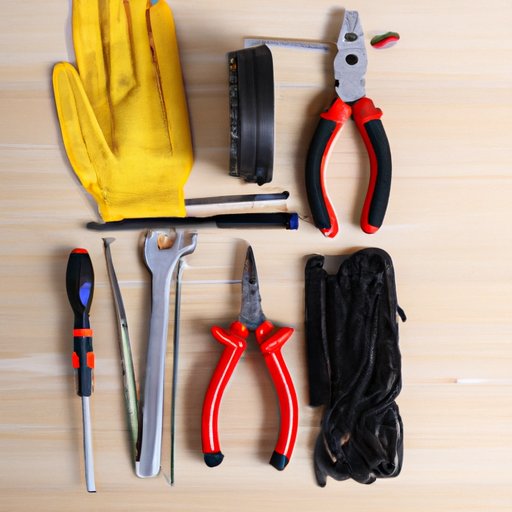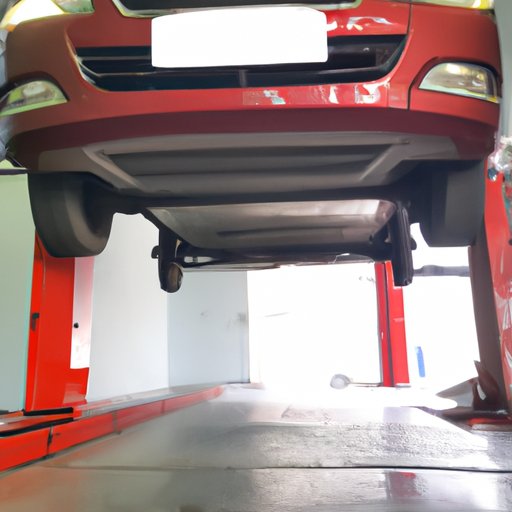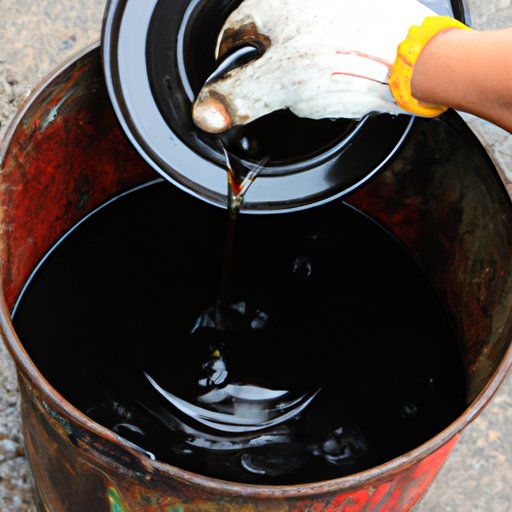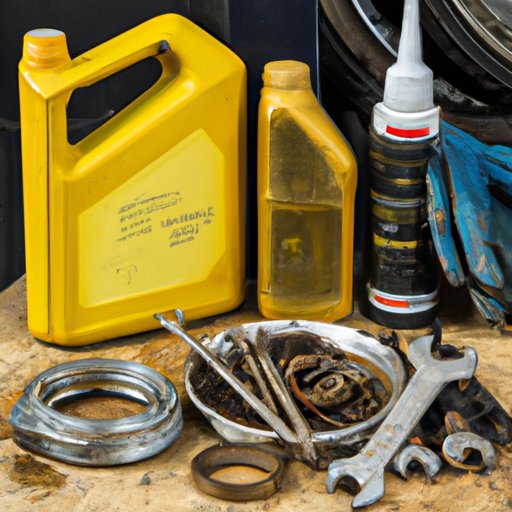Introduction
Changing the oil in your car is one of the most important forms of regular maintenance that you can do. It helps to keep your engine running smoothly and efficiently, and it can even help to extend the life of your vehicle. Fortunately, changing the oil is a relatively simple process that you can do at home with the right tools and supplies.
In this article, we’ll provide a step-by-step guide to changing the oil in your car at home. We’ll cover everything from gathering the necessary tools and supplies to disposing of the old oil properly. Let’s get started!

Gather the Necessary Tools and Supplies
Before you can start changing your oil, you’ll need to make sure that you have all of the necessary tools and supplies. Here’s a list of what you’ll need:
- Oil filter wrench
- Socket wrench
- Oil drain pan
- Funnel
- Rags or paper towels
- New oil filter
- Motor oil (check your owner’s manual for the correct type)

Raise the Car to a Safe Working Height
Once you have all of the necessary tools and supplies, the next step is to raise your car to a safe working height. This will give you space to access the oil drain plug and oil filter. Here are the steps to take:
Finding a Safe Location
First, you’ll need to find a safe location to work on your car. Make sure that there’s plenty of room for you to move around and that the ground is level. If you don’t have a driveway or garage, you can use a flat piece of pavement or a parking lot.
Preparing the Car for Lifting
Next, you’ll need to prepare the car for lifting. Make sure that the parking brake is engaged and that all four wheels are chocked. This will ensure that the car doesn’t move while you’re working on it.
Lifting the Car Safely
Now it’s time to lift the car. You can use a jack to lift the car, but make sure that you’re using a sturdy jack stand to support the weight of the car. Once the car is securely lifted, you’re ready to start draining the old oil.
Drain the Old Oil
The next step is to drain the old oil from the engine. Here’s how to do it:
Locating the Drain Plug
Start by locating the oil drain plug. It’s usually located near the bottom of the engine, and it may be covered with a plastic or metal shield. Once you’ve located the drain plug, you’re ready to start draining the oil.
Draining the Oil
Place the oil drain pan beneath the drain plug and then use the socket wrench to loosen it. Be careful not to over-tighten the plug as you’re loosening it. Once the plug is loose, the oil should start to drain out. Allow the oil to drain completely before replacing the plug.
Replace the Oil Filter
Once the oil has been drained, it’s time to replace the oil filter. Here’s how to do it:
Removing the Old Filter
Start by removing the old filter. Use the oil filter wrench to loosen the filter, being careful not to over-tighten it. Once the filter is loose, you can remove it from the engine.
Installing the New Filter
The next step is to install the new filter. Place the new filter in position and then use the oil filter wrench to tighten it. Again, be careful not to over-tighten the filter.
Refill with New Oil
Now that the old oil has been drained and the oil filter has been replaced, it’s time to refill the engine with new oil. Here’s how to do it:
Choosing the Right Oil
First, you’ll need to choose the right oil for your engine. Check your owner’s manual for the recommended type of oil and viscosity. Once you’ve chosen the right oil, you’re ready to fill the engine.
Filling the Engine with Oil
Place the funnel in the filler neck and pour the oil into the engine. Make sure to keep track of how much oil you’re pouring in so that you don’t overfill the engine. Once you’ve filled the engine with the recommended amount of oil, you’re ready to dispose of the used oil.

Dispose of Used Oil Properly
Once you’ve finished changing the oil, it’s important to dispose of the used oil properly. Here’s how to do it:
Collecting the Used Oil
Start by collecting the used oil in an appropriate container. Make sure to label the container clearly so that you don’t accidentally use it for something else. Once the container is full, you’re ready to dispose of the used oil.
Disposing of the Used Oil
Check with your local government to find out where you can dispose of used oil. In many areas, you can take the used oil to a collection center or an auto parts store. Make sure to follow all of the instructions carefully when disposing of the used oil.
Clean Up the Work Area
Finally, it’s time to clean up the work area. Here’s what you need to do:
Cleaning Up Spills
Start by cleaning up any spills. Make sure to use a rag or paper towels to wipe up any oil that may have spilled onto the ground. Once you’ve cleaned up the spills, you’re ready to store the tools and supplies.
Storing Tools and Supplies
Now it’s time to put away the tools and supplies. Make sure to store them in a safe place so that they’re easily accessible the next time you need to change your oil.
Conclusion
Changing the oil in your car is an important part of regular maintenance that you can do at home. In this article, we’ve provided a step-by-step guide to changing the oil at home. We’ve covered everything from gathering the necessary tools and supplies to disposing of the used oil properly.
To recap, here’s what you need to do to change the oil in your car: gather the necessary tools and supplies, raise the car to a safe working height, drain the old oil, replace the oil filter, refill with new oil, dispose of the used oil properly, and clean up the work area.
(Note: Is this article not meeting your expectations? Do you have knowledge or insights to share? Unlock new opportunities and expand your reach by joining our authors team. Click Registration to join us and share your expertise with our readers.)
